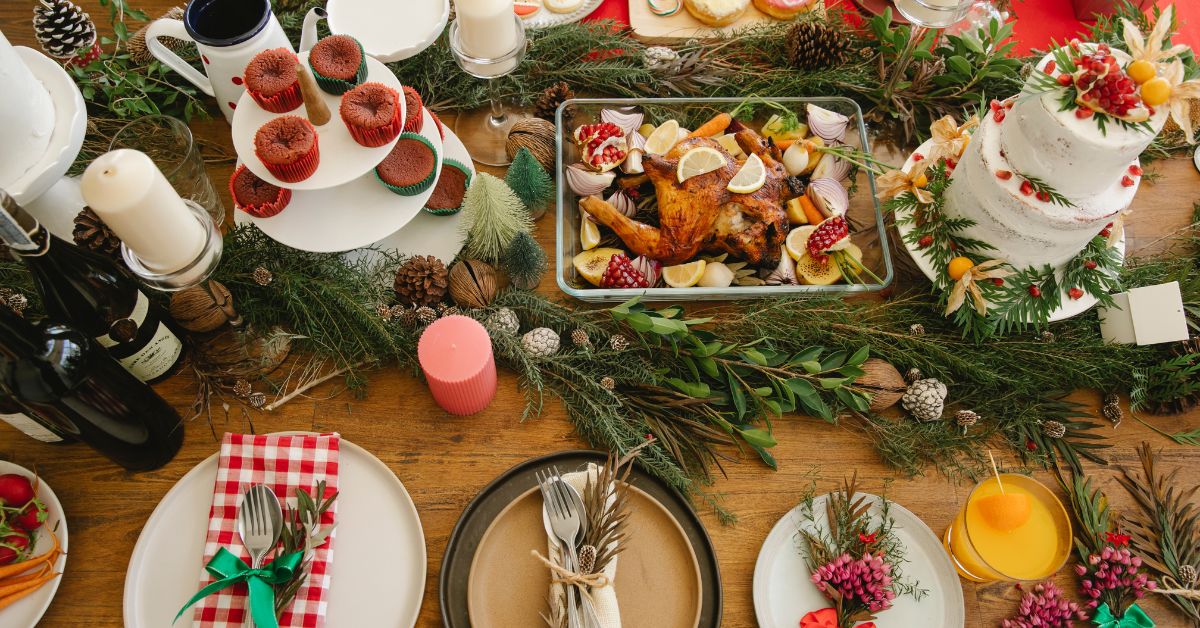The holidays are a time of connection, reflection, and celebration—and at the center of these traditions often lies food. Across cultures and histories, holiday meals serve as a way to bring loved ones together, honor shared heritage, and create lasting memories. From latkes sizzling in oil to plates of tamales or sweet potato pie, these dishes are more than sustenance—they’re symbols of community, resilience, and joy.
For those in eating disorder recovery, however, navigating holiday meals can be challenging. Food may carry complicated emotions, making the celebratory nature of shared meals feel overwhelming. Yet, one of the profound joys of recovery is rediscovering the simple pleasure of joining loved ones at the table. Let’s look at four beloved holiday food traditions from around the world, celebrating the beauty of these shared experiences.
1. Hanukkah Foods: A Celebration of Light and Resilience
Hanukkah, the Jewish Festival of Lights, is rooted in the miracle of the menorah—a single day’s supply of oil lasting eight nights. This story is reflected in traditional Hanukkah dishes, which often feature foods fried in oil as a tribute to this enduring symbol of hope and faith.
Traditional Hanukkah Dishes:
- Latkes: Crispy potato pancakes, often served with applesauce or sour cream.
- Sufganiyot: Jelly-filled donuts dusted with powdered sugar, a sweet and indulgent treat.
Preparing and sharing these foods brings families together, providing a delicious way to celebrate tradition and resilience. Whether making latkes from scratch or selecting your favorite fillings for sufganiyot, the process itself can be as meaningful as the meal.
2. Kwanzaa Foods: Honoring African Heritage
Kwanzaa, celebrated from December 26 to January 1, honors African heritage and culture through its seven guiding principles, or Nguzo Saba. Central to this celebration is the gathering of family and community to share meals that reflect a blend of African and African American culinary traditions.
Traditional Kwanzaa Dishes:
- Sweet Potato Pie: A rich and comforting dessert that carries deep cultural significance.
- Good-Deed Collard Greens: Often prepared vegetarian-style, symbolizing resilience and abundance.
- Jollof Rice: A West African classic, brimming with vibrant flavors.
Kwanzaa meals are more than nourishment; they’re an opportunity to reconnect with heritage and loved ones. The shared preparation and enjoyment of these foods create a powerful sense of unity.
3. Italian and Italian American Traditions: Feasting on Christmas
Italian holiday meals are renowned for their warmth, abundance, and intricate flavors. Across Italy and Italian American households, food plays a starring role in Christmas celebrations.
Christmas Eve:
The Feast of the Seven Fishes is a cherished tradition in many Italian American communities. Featuring an array of seafood dishes, this meal honors abstaining from meat while celebrating the bounty of the sea. Common dishes include baccalà (salt cod), clams, and shrimp scampi.
Christmas Day:
Baked pasta dishes like stuffed shells or lasagna take center stage, bringing families together over warm, hearty servings. These dishes are often passed down through generations, making them a deeply personal part of holiday traditions.
The preparation and sharing of these meals reflect the spirit of togetherness and joy that defines the season.
4. Regional Christmas Foods Across the United States
The United States’ rich cultural tapestry is reflected in its diverse regional Christmas food traditions. While Christmas is celebrated differently across the country, the foods served highlight the blending of histories, flavors, and customs.
Regional Highlights:
- Southern U.S.: Glazed ham and pecan pie are beloved staples, with flavors that evoke comfort and hospitality.
- Midwest: Scandinavian influences bring dishes like lefse (a soft flatbread) and lutefisk (preserved fish) to Christmas tables.
- West Coast: Tamales, inspired by Mexican holiday traditions, are a labor of love often prepared as a group activity.
These regional variations remind us that Christmas meals are as diverse as the people who celebrate them. Each dish tells a story, creating opportunities to learn about and honor different cultural roots.
Food as a Gateway to Connection and Joy in Recovery
Food is more than a necessity—it’s a powerful way to connect with others and ourselves. During the holidays, these connections are amplified as we gather to celebrate with cherished traditions and meaningful meals. For those in recovery from eating disorders, embracing these moments at your own pace is a courageous step toward reclaiming the joy of shared experiences.
Whether savoring a familiar family recipe or exploring a new cultural tradition, holiday meals invite us to come together, reflect on what matters most, and celebrate the bonds that unite us. What are your favorite holiday foods and traditions? Share your story in the comments below and join the conversation.
Clinically Reviewed By

Nick Kahm, PhD
Co-Founder
Nick Kahm, a former philosophy faculty member at St. Michael's College in Colchester, VT, transitioned from academia to running the Kahm Clinic with his mother. He started the clinic to train dietitians in using Metabolic Testing and Body Composition Analysis for helping people with eating disorders. Now, he is enthusiastic about expanding eating disorder treatment through the Kahm Center for Eating Disorders in Vermont.
